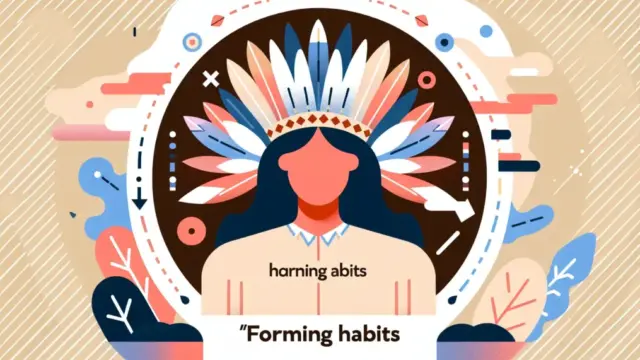Setting goals is the first step toward a more fulfilling life. By turning your dreams and aspirations into concrete objectives, you can clearly see how to move forward. In this blog, we’ll dive deep into the art of goal-setting and share practical steps to pave your way to success.
Building on small successes helps you gain confidence and empowers you to chase even bigger dreams. Remember, goal-setting is just the beginning. Here, we’ll provide tips to keep you motivated and help you take one step at a time.
- Exploring the connection between goal-setting and personal growth
- How to set small goals using the SMART framework
- Tips for maintaining motivation
Understanding the Importance of Goal Setting
Setting goals is a crucial process in our lives. When we establish clear goals, we create a sense of direction that adds meaning to our daily actions. In this section, we will delve into the impact of goals and their connection to personal growth. By understanding the significance of goal setting, you can take the first step toward leading a more fulfilling life.
The Impact of Goals
Goal setting significantly influences our thoughts and actions. When we have a clear target in mind, our choices in everyday life begin to shift. Striving towards our goals boosts our self-esteem and gives us a sense of achievement. This, in turn, ignites our desire to take on new challenges, creating a positive feedback loop.
Moreover, having goals allows us to use our time and resources more efficiently. By cutting out unnecessary distractions, we can focus on what truly matters. This helps us maximize opportunities for personal growth.
- Having goals adds meaning to our actions
- Enhances self-esteem and increases motivation to take on challenges
- Enables efficient use of time and resources
The Connection to Personal Growth
Personal growth and goal setting are closely intertwined. By setting goals, we deepen our self-assessment and understanding. Reflecting on what we truly desire and how we want to grow elevates our self-awareness. This process is essential for individual development.
Furthermore, as we work towards our goals, we acquire new skills and knowledge. The lessons learned from both failures and successes are invaluable experiences that contribute to our personal growth. Goal setting is not just about reaching an endpoint; it’s a journey of growth in itself.

If you found this article interesting, you might also enjoy our piece on “Effective Goal Setting Techniques and Tips for Progress Management.” It offers insights on how to set goals effectively and manage your progress toward achieving them, so be sure to check it out!
- Goal setting deepens self-assessment and understanding
- Increases opportunities to acquire new skills and knowledge
- Goals represent the journey of growth itself
How to Start with Small Goals
When it comes to setting goals, it’s crucial to begin with small objectives rather than just chasing big dreams. By establishing smaller goals, you can easily experience a sense of achievement, which helps maintain your motivation. In this section, we’ll introduce the concept of SMART goals and provide practical examples of initial goals to help you take that first step in goal setting.
The Concept of SMART Goals
SMART goals are a framework for effective goal setting. The acronym SMART stands for Specific, Measurable, Achievable, Relevant, and Time-bound. By considering these five elements, you can set clearer and more attainable goals.
For example, instead of simply aiming to “exercise,” you might specify your goal as “jogging for 30 minutes three times a week.” This sort of specificity makes it easier to manage your progress. Utilizing the SMART framework can significantly increase the likelihood of your success.
- SMART goals are useful for setting specific objectives
- It’s important to keep the five elements of goals in mind
- Specific goals make self-management easier
Practical Examples of Initial Goals
When setting initial goals, it’s important to start with achievable and easily manageable tasks. For instance, you might consider goals like “doing 10 minutes of stretching every morning” or “reading one book per week.” These goals can be accomplished in a short time frame, allowing you to build confidence as you move on to the next steps.
Additionally, initial goals should aim to improve your quality of life. For example, a goal like “writing down three good things in a journal each day to cultivate gratitude” can contribute to personal growth. By accumulating small successes, you’ll be better prepared to tackle larger challenges in the future.
- Begin initial goals with achievable tasks
- Suggested specific goals include stretching and reading
- Accumulating small successes fosters personal growth
Advancing Your Skills
When it comes to setting goals, it’s not just about having something to aim for; you also need the skills to actually make progress. In this section, we’ll discuss how to set milestones on your journey to achieving your goals and how to visualize your progress. By learning specific techniques, you can develop the ability to move steadily towards your objectives.
Setting Milestones
Milestones are crucial checkpoints in the process of reaching your goals. To achieve a significant objective, it’s effective to break it down into smaller, manageable targets, treating these as milestones you can tackle step by step. For instance, if your goal is to complete a marathon in six months, an initial milestone could be to run 5 kilometers in one month.
By establishing milestones like this, you can experience a sense of accomplishment more easily, which in turn boosts your motivation for the next steps. Additionally, regularly checking your progress allows you to reassess your goals as needed, enabling you to adapt flexibly to changes.
- Milestones are key points in achieving your goals.
- Setting small targets and progressing step by step is effective.
- Reviewing your progress provides the flexibility to revise your goals.
Visualizing Progress
Visualizing your progress is vital for maintaining motivation as you work towards your goals. By making your achievements visible, you can better appreciate your efforts. For example, tracking your progress through graphs or checklists allows you to see your growth firsthand.
Moreover, visualizing progress enhances your awareness of your goals. Regularly reflecting on your advancement helps keep your motivation high. This consistent awareness allows you to maintain focused actions toward achieving your goals.
- Visualizing progress helps sustain motivation.
- Using graphs or checklists for tracking is effective.
- Regular reflections boost your goal awareness.
Tips for Maintaining Motivation
Once you’ve set your goals, keeping your motivation high as you work toward them is crucial. The journey to achieving these goals can sometimes be tough, leading to feelings of boredom or fatigue. In this section, we’ll explore practical tips for boosting your motivation, such as utilizing self-rewards and building a support system. By implementing these strategies, you can sustain your drive toward success.
Utilizing Self-Rewards
Self-rewards can be a powerful tool in achieving your goals. By treating yourself to a small reward after hitting a milestone, you can boost your motivation for the next steps. For instance, if you accomplish a goal over the course of a month, consider rewarding yourself with a favorite movie night or a special meal.
Incorporating a self-reward system makes it easier to feel a sense of accomplishment, sparking your enthusiasm for future challenges. Remember, self-rewards are not just treats; they are essential components for inspiring yourself along the way.
- Self-rewards boost motivation
- Set up rewards for small achievements
- Feeling accomplished ignites enthusiasm for the next challenge
Building a Support System
To maintain motivation, having support from those around you is essential. By building a support system with friends, family, or colleagues, you can reduce feelings of isolation and encourage one another. Having companions who are also striving toward goals can help you all stay motivated through mutual inspiration.
Additionally, regularly sharing your progress with each other fosters a sense of accountability and heightens your awareness of your goals. A support system becomes a reliable partner on your journey to achieving what you set out to do.
- Surrounding yourself with support is vital for motivation
- Encouraging each other reduces feelings of isolation
- Regular progress updates foster accountability
Conclusion
Setting goals is a fundamental step toward enriching your life. By establishing specific objectives and accumulating small successes, you can confidently move on to the next stage of your journey. Additionally, visualizing your progress and utilizing self-rewards can help maintain your motivation over time. Surrounding yourself with supportive people means you won’t have to walk the path to achieving your goals alone.
By putting into practice the goal-setting techniques and methods discussed in this article, you too can reach your objectives and foster personal growth. Start small, and gradually work your way toward your bigger dreams.
- Setting goals is a fundamental step to enrich your life
- Build confidence through small successes
- Utilize support systems to maintain motivation
Taking that first step can open up a world of new possibilities. We’d love to hear about your goals, so please share them in the comments!



















































Comment